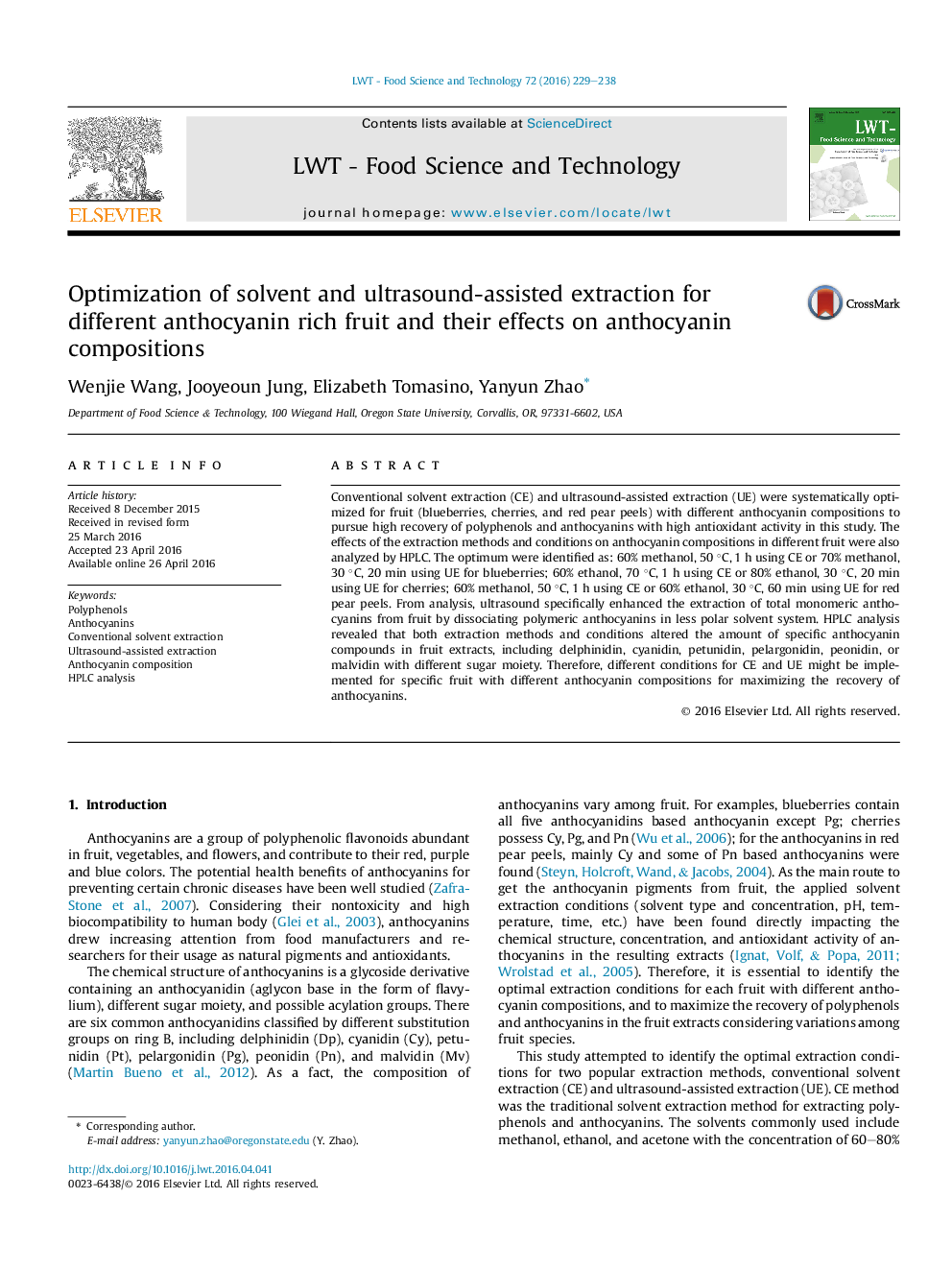| Article ID | Journal | Published Year | Pages | File Type |
|---|---|---|---|---|
| 4563278 | LWT - Food Science and Technology | 2016 | 10 Pages |
•Two extraction methods for blueberry, cherry and red pear were statistically optimized.•Fruit with different anthocyanins responded differently to extraction conditions.•Extraction methods and conditions impacted degree of anthocyanin polymerization.•Ultrasound led to higher amount and more stable polymeric anthocyanins in extracts.
Conventional solvent extraction (CE) and ultrasound-assisted extraction (UE) were systematically optimized for fruit (blueberries, cherries, and red pear peels) with different anthocyanin compositions to pursue high recovery of polyphenols and anthocyanins with high antioxidant activity in this study. The effects of the extraction methods and conditions on anthocyanin compositions in different fruit were also analyzed by HPLC. The optimum were identified as: 60% methanol, 50 °C, 1 h using CE or 70% methanol, 30 °C, 20 min using UE for blueberries; 60% ethanol, 70 °C, 1 h using CE or 80% ethanol, 30 °C, 20 min using UE for cherries; 60% methanol, 50 °C, 1 h using CE or 60% ethanol, 30 °C, 60 min using UE for red pear peels. From analysis, ultrasound specifically enhanced the extraction of total monomeric anthocyanins from fruit by dissociating polymeric anthocyanins in less polar solvent system. HPLC analysis revealed that both extraction methods and conditions altered the amount of specific anthocyanin compounds in fruit extracts, including delphinidin, cyanidin, petunidin, pelargonidin, peonidin, or malvidin with different sugar moiety. Therefore, different conditions for CE and UE might be implemented for specific fruit with different anthocyanin compositions for maximizing the recovery of anthocyanins.
